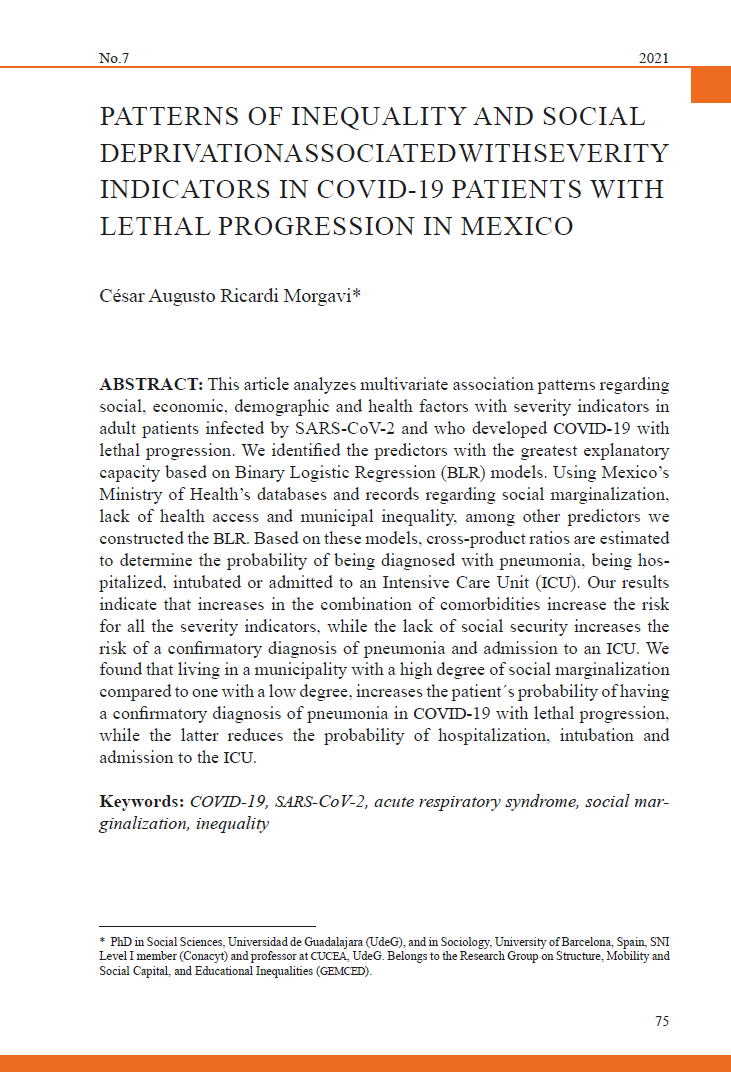Patterns of inequality and social deprivation associated with severity indicators in COVID-19 patients with lethal progression in Mexico
Palabras clave:
COVID-19, acute respiratory syndrome, social marginalization, inequalityResumen
This article analyzes multivariate association patterns regarding social, economic, demographic and health factors with severity indicators in adult patients infected by SARS-CoV-2 and who developed COVID-19 with lethal progression. We identified the predictors with the greatest explanatory capacity based on Binary Logistic Regression (BLR) models. Using Mexico’s Ministry of Health’s databases and records regarding social marginalization, lack of health access and municipal inequality, among other predictors we constructed the BLR. Based on these models, cross-product ratios are estimated to determine the probability of being diagnosed with pneumonia, being hospitalized, intubated or admitted to an Intensive Care Unit (ICU). Our results indicate that increases in the combination of comorbidities increase the risk for all the severity indicators, while the lack of social security increases the risk of a confirmatory diagnosis of pneumonia and admission to an ICU. We found that living in a municipality with a high degree of social marginalization compared to one with a low degree, increases the patient´s probability of having a confirmatory diagnosis of pneumonia in COVID-19 with lethal progression, while the latter reduces the probability of hospitalization, intubation and admission to the ICU. Keywords: COVID-19, SARS-CoV-2, acute respiratory syndrome, social marginalization, inequality
Descargas
Publicado
Cómo citar
Número
Sección
Licencia

Esta obra está bajo una licencia internacional Creative Commons Atribución-NoComercial-CompartirIgual 4.0.




